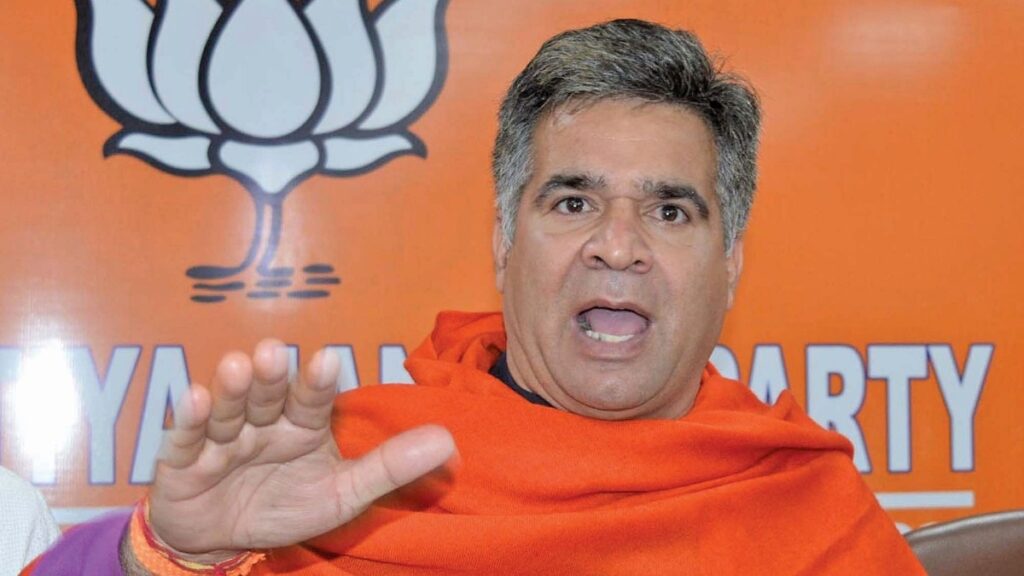Assembly elections are being held in Jammu and Kashmir after 10 years. The Bharatiya Janata Party (BJP) has appointed Ram Madhav as the election in-charge. Ram Madhav, who is heading the BJP’s election campaign in Jammu and Kashmir, has claimed that the BJP will emerge as the largest party and the next government will be formed by nationalists. He has claimed to win 35 seats in the Jammu region and has expressed hope of success by mentioning contesting on 20 seats in the Kashmir Valley as well. BJP leaders are also expressing hope of winning 10 seats in the valley. The question is how practical is the BJP’s 35:10 formula in Jammu and Kashmir?
Jammu and Kashmir, how many seats in which region
There are a total of 90 assembly seats in the Union Territory of Jammu and Kashmir. 47 seats are in Kashmir and 43 seats are in Jammu region. If we talk about the period before delimitation, till the 2014 elections, there used to be 87 seats, out of which 37 seats were in Jammu and 46 seats were in Kashmir. There were four seats in Ladakh as well. After the change in the status of the state, Ladakh has become a separate union territory. In the delimitation that took place after this, six seats have increased in Jammu and one seat in Kashmir.
How practical is the 35:10 formula
The nature of politics of these two states, included in the name of Jammu and Kashmir, has also been different. While national parties like BJP and Congress have been strong in Jammu region, the valley has been the stronghold of parties like People’s Democratic Party (PDP) and National Conference. Ram Madhav is claiming to win 35 seats of Jammu. There are five districts of Jammu region, which is considered Hindu majority, where the Muslim population is more. The list of such districts includes Doda, Rajouri, Poonch, Ramban, Kishtwar. In Reasi district, the population of both Hindus and Muslims is almost equal.
Even if we leave out Reasi, these five Muslim majority districts of Jammu region had 13 seats till the 2014 assembly elections which has now increased to 16. Out of these, three seats in Rajouri district and two in Poonch district, a total of five seats are reserved for ST where BJP is expected to get an edge due to the reservation provision. The electoral battle for the remaining 11 seats will not be easy for the party. However, in the 2014 assembly elections, BJP had won six seats in these districts but at that time Congress, National Conference and PDP, all these parties were contesting separately and the Muslim votes were divided.
Political analyst Amitabh Tiwari said that the biggest hurdle in BJP’s target of winning 35 seats in Jammu is the seats in Muslim majority districts of this region where PDP and National Conference have been performing well. The four to seven seats that parties like PDP and National Conference, which are called valley parties, have been winning in Jammu region are from these districts. If BJP sweeps the seats with Hindu majority, wins reserved seats and wins three Muslim majority seats, then it will be able to reach this number, which does not seem practical.
What is the basis of hope for success in Kashmir region
BJP has never been able to win any seat in any election in Kashmir valley. This time the party is hoping for a better performance in the valley and it has its own basis for that. BJP, which refrained from entering the pitch of Kashmir in the Lok Sabha elections, has said that it will field candidates on 20 seats in the valley this time. The party is fielding its candidates but is also working on another plan keeping in mind the mood of the valley. What is the basis of BJP’s hope in the valley?
1- Strategy to support independents
In Kashmir, along with fielding its own candidates, BJP is following the strategy of supporting independent candidates who have a high chance of winning. From Engineer Rashid’s party to Ghulam Nabi Azad’s Democratic Progressive Azad Party, many small parties have also entered the fray in this election.
These parties are hitting the politics of Mufti and Abdullah family in the valley, talking about new options. The abundance of independent candidates is also making the contest multi-cornered. Recently, Omar Abdullah had attacked the BJP by calling the fielding of independent candidates as its strategy. BJP’s chances in the valley also depend on the performance of the parties of Engineer Rashid, Sajjad Lone, Ghulam Nabi Azad. The more strongly these parties fight, the greater will be the chances of the National Conference-led alliance staying away from the majority.
2- Omar-Mehbooba lose in Lok Sabha elections
In the Lok Sabha elections, both Omar Abdullah of the Abdullah family and Mehbooba Mufti of the Mufti family had to face defeat. Omar Abdullah was defeated by independent engineer Rashid. The defeat of the two prominent leaders of the two major parties of the valley was linked to the changed mood of the people of the new Kashmir and the search for new options. If non-PDP, non-National Conference candidates are elected to the assembly, then this is also being considered beneficial for the BJP.
3- mood of young voters
The youth is also the basis of BJP’s hopes. The old people are associated with PDP and National Conference but the youth is talking about development, employment and new options. BJP is also seeing hopes for itself by looking at the mood of the young voters.
Source (PTI) (NDTV) (HINDUSTANTIMES)
